#Richard T. Heffron
Explore tagged Tumblr posts
Text
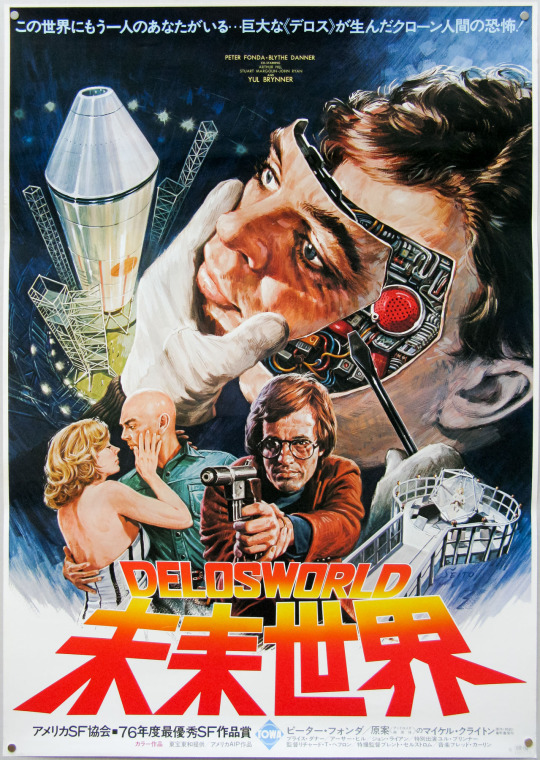

Futureworld - 1976 - Dir. Richard T. Heffron
Japanese B2 Posters
#Futureworld#futureworld 1976#Peter Fonda#Blythe Danner#Arthur Hill#Yul Brynner#John P. Ryan#Stuart Margolin#future world#westworld#westworld 2#Richard T. Heffron#japan#japanese#b2#b2 poster#japanese posters#movie poster#movie posters#film poster#Seito#Delosworld#Mundo futuro
6 notes
·
View notes
Text
#futureworld#richard t. heffron#peter fonda#science fiction#science fiction art#science fiction movies#sci fi#sci fi and fantasy#sci fi art#70s sci fi#movie art#art#drawing#movie history#pop art#modern art#pop surrealism#cult movies#portrait#cult film
3 notes
·
View notes
Text


Band of Brothers Birthdays
January
1 John S. Zielinski Jr. (b. 1925)
21 Richard D. “Dick” Winters (b. 1918)
26 Herbert M. Sobel (b. 1912)
30 Clifford Carwood "Lip" Lipton (b. 1920)
31 Warren H. “Skip” Muck (b. 1922) & Robert B. Brewer (b. 1924)
February
8 Clarence R. Hester (b. 1916)
18 Thomas A. Peacock (b. 1920)
23 Lester A. “Les” Hashey (b. 1925)
March
1 Charles E. “Chuck” Grant (b. 1922)
2 Colonel Robert L. “Bob” Strayer (b. 1910)
4 Wayne “Skinny” Sisk (b. 1922)
10 Frank J. Perconte (b. 1917)
13 Darrell C. “Shifty” Powers (b. 1923)
14 Joseph J. “Joe” Toye (b. 1919)
24 John D. “Cowboy” Halls (b. 1922)
26 George Lavenson (b. 1917) & George H. Smith Jr. (1922)
27 Gerald J. Loraine (b. 1913)
April
3 Colonel Robert F. “Bob” Sink (b. 1905) & Patrick S. “Patty” O’Keefe (b. 1926)
5 John T. “Johnny” Julian (b. 1924)
10 Renée B. E. Lemaire (b. 1914)
11 James W. Miller (b. 1924)
15 Walter S. “Smokey” Gordon Jr. (b. 1920)
20 Ronald C. “Sparky” Speirs (b. 1920)
23 Alton M. More (b. 1920)
27 Earl E. “One Lung” McClung (b. 1923) & Henry S. “Hank” Jones Jr. (b. 1924)
28 William J. “Wild Bill” Guarnere (b. 1923)
May
12 John W. “Johnny” Martin (b. 1922)
16 Edward J. “Babe” Heffron (b. 1923)
17 Joseph D. “Joe” Liebgott (b. 1915)
19 Norman S. Dike Jr. (b. 1918) & Cleveland O. Petty (b. 1924)
25 Albert L. "Al" Mampre (b. 1922)
June
2 David K. "Web" Webster (b. 1922)
6 Augusta M. Chiwy ("Anna") (b. 1921)
13 Edward D. Shames (b. 1922)
17 George Luz (b. 1921)
18 Roy W. Cobb (b. 1914)
23 Frederick T. “Moose” Heyliger (b. 1916)
25 Albert Blithe (b. 1923)
28 Donald B. "Hoob" Hoobler (b. 1922)
July
2 Gen. Anthony C. "Nuts" McAuliffe (b. 1898)
7 Francis J. “Frank” Mellet (b. 1920)
8 Thomas Meehan III (b. 1921)
9 John A. Janovec (b. 1925)
10 Robert E. “Popeye” Wynn (b. 1921)
16 William S. Evans (b. 1910)
20 James H. “Moe” Alley Jr. (b. 1922)
23 Burton P. “Pat” Christenson (b. 1922)
29 Eugene E. Jackson (b. 1922)
31 Donald G. "Don" Malarkey (b. 1921)
August
3 Edward J. “Ed” Tipper (b. 1921)
10 Allen E. Vest (b. 1924)
15 Kenneth J. Webb (b. 1920)
18 Jack E. Foley (b. 1922)
26 Floyd M. “Tab” Talbert (b. 1923) & General Maxwell D. Taylor (b. 1901)
29 Joseph A. Lesniewski (b. 1920)
31 Alex M. Penkala Jr. (b. 1924)
September
3 William H. Dukeman Jr. (b. 1921)
11 Harold D. Webb (b. 1925)
12 Major Oliver M. Horton (b. 1912)
27 Harry F. Welsh (b. 1918)
30 Lewis “Nix” Nixon III (b. 1918)
October
5 Joseph “Joe” Ramirez (b. 1921) & Ralph F. “Doc” Spina (b. 1919) & Terrence C. "Salty" Harris (b. 1920)
6 Leo D. Boyle (b. 1913)
10 William F. “Bill” Kiehn (b. 1921)
15 Antonio C. “Tony” Garcia (b. 1924)
17 Eugene G. "Doc" Roe (b. 1922)
21 Lt. Cl. David T. Dobie (b. 1912)
28 Herbert J. Suerth Jr. (b. 1924)
31 Robert "Bob" van Klinken (b. 1919)
November
11 Myron N. “Mike” Ranney (b. 1922)
20 Denver “Bull” Randleman (b. 1920)
December
12 John “Jack” McGrath (b. 1919)
31 Lynn D. “Buck” Compton (b. 1921)
Unknown Date
Joseph P. Domingus
Richard J. Hughes (b. 1925)
Maj. Louis Kent
Father John Mahoney
George C. Rice
SOURCES
Military History Fandom Wiki
Band of Brothers Fandom Wiki
Traces of War
Find a Grave
#this is going off who was on on the show#i double checked the dates and such but if you notice any mistakes please let me know :)#band of brothers#easy company#hbo war#not gonna tag everyone lol#mine: misc#yep it's actually Halls and not Hall#i've seen Terrence Harris's name spelled with as Terence but wenand t with two Rs s#since that's how it's spelled on photos of memorials and on his gravestone#I’ll do the pacific next! should be significantly shorter since there’s far fewer characters 😅
213 notes
·
View notes
Photo


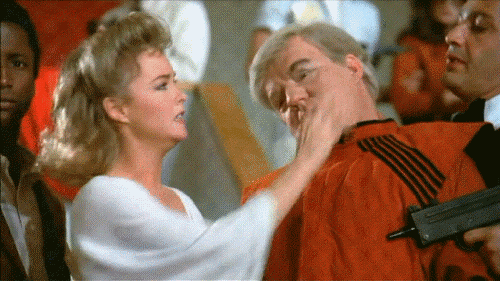
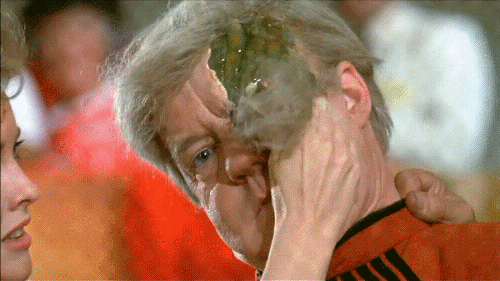
V - The Final Battle Episode 01 (1984) Created by Kenneth Johnson Warner Bros. Television Dir. Richard T. Heffron
Faye Grant as Juliet Parrish Richard Herd as John
586 notes
·
View notes
Text
THE JUNE REBELLION: NOT THE FRENCH REVOLUTION
i fear we need to talk about this since i've seen so many tiktok referring to the french revolution when talking about les miserables and it needs to be addressed (aka i'm going to get it out of my system once and for all so i can stop being bitter about it)
i mean, i see those kind of tiktok too much and i am annoyed so bare with me:

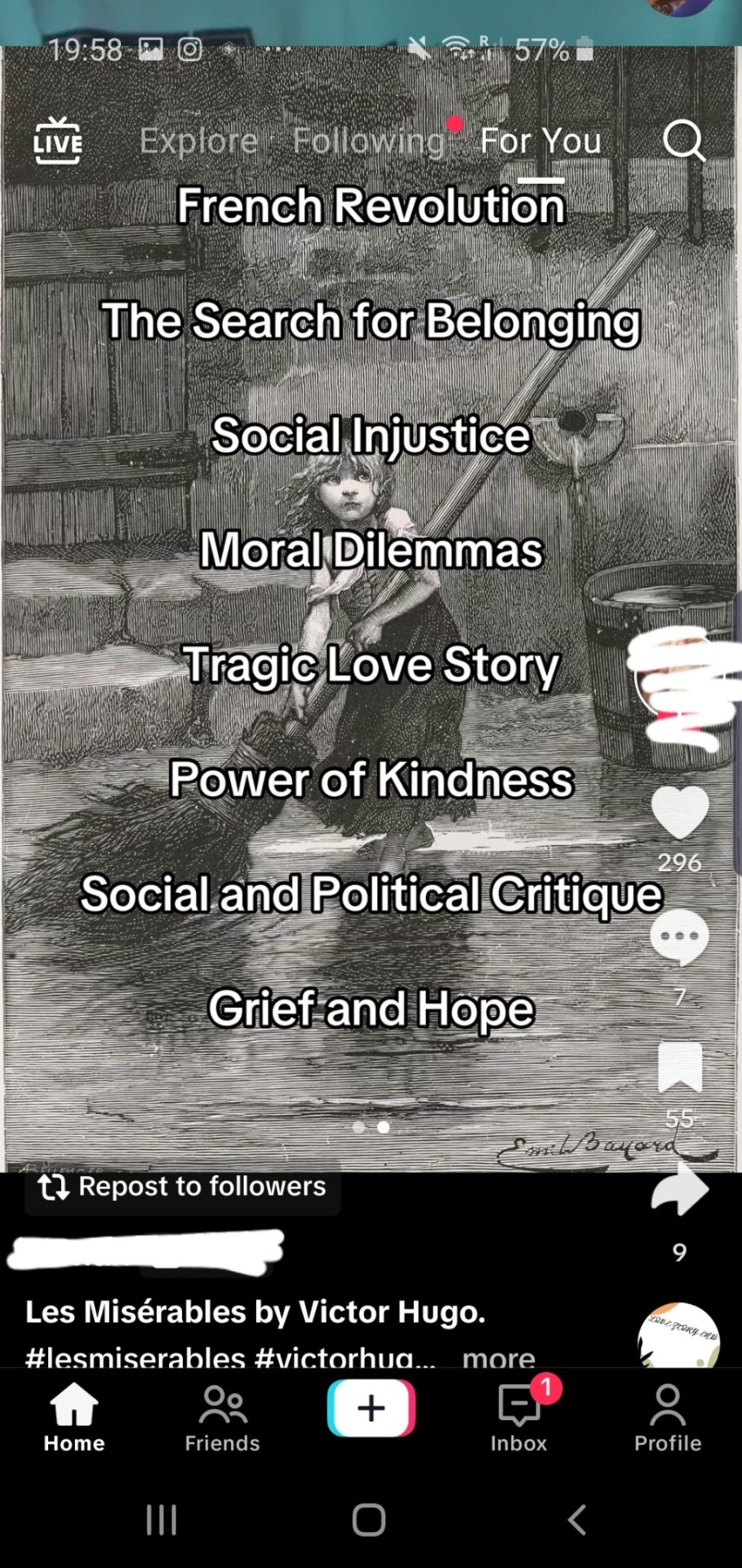
so, let's start with les miserables: when does it takes place ?
the chronology of les mis is very long, but the part everyone is referring to (and everyone's favourite part) is the barricades. the barricades takes place during the June Rebellion.
now what is the June Rebellion?
it's a two days rebellion that arise in Paris in an era of political and social instability.
in 1832. 43 years after the french revolution.
so it's safe to say, the plot of les miserables is not at all taking place during the french revolution. and this rebellion was a failure (a flop, as some might even say) and did not overthrow the government (sadly) at all for various reasons.
(see this post here about it, even thought pinpointing the reasons to why a revolution fails is, imo, a bit hard and i am in no way shape or form an historian)
now, for the French Revolution.
keeping it very simple, it starts in may 1789 and end on november 9th 1799 when napoleon did a coup and took the power (others (marxists mostly) might argue that it ended with the death of robespierre, soooo pick your poison). so right of the bat: the french revolution is not one big battle and boom, it's a long period of changes and instability.
i think what people refer to when saying "the french revolution" might be the 14th of July, with the Prise de la Bastille. i know it's a very important event as it is our national day (yay liberty) and it's historically the first big intervention by the parisians (as in the people as in the poor) in the revolution. personally i'm not crazy about this moment (i really really like the march of the women to Versailles in october 1789, insane) it wasn't actually that big of a battle but the repercussions were huge so good job. but here is the problem then, what would make you think this successful battle is the battle we see in les miserables?
[i'm gonna go on a personal mini-rant here but it seriously worries me that so many people, mostly Americans, have so little knowledge of this. i'm not saying you should know everything about french history (as a matter of fact you should not why would you do that to yourself) but it's like... basic knowledge. and what worries me the most is that they think a failed two days rebellion is the french revolution as if it was not an event that reshaped the entirety of the french political system and was a trigger to a lot of changes in europe???? i mean... look at that: ]



i know we have a lot of revolutions in french history but if you need to know one, know the French Revolution, at least just the fact that it was a years long event with successful battles and a successful outcome (not gonna go into the whole it's a revolution for the bourgeoisie thing even if... well it kinda is).
and if you have not read/seen les miserables with your eyes closed, you know that it is very not successful at all !
anyway, that's it !
to summarise:
French Revolution = 1789 / very long / successful outcome / successful battles / not in Les Miserables
June Rebellion = 1832 / 43 years after / two days long / failure / in Les Miserables
Recommendations of...
Movies during the French Revolution = Danton (Andrzej Wajda) / La Revolution Française I and II (Robert Enrico & Richard T. Heffron)
Musicals during the French Revolution = La Revolution Française (Alain Boublil & Claude-Michel Schoenberg, yes same dudes that made les mis the musical) / Les Amants de la Bastille (not good but definitely super fun to watch) / The Scarlet Pimpernel (Nan Knighton, haven't seen it but some of the songs SLAPS)
Now you can obsess on the french revolution correctly ! and it's all very good recommendations too ! yes !!!!!!
(some of my fav les miserables adaptations here too)
i'm done, thanks for sticking with me, i love you all and i will stop yapping now ! buh-bye!
#i promise i will stop be bitter about that now that it's out of my system#my french heart could not take it anymore im sorry#les mis#les miserables#victor hugo#the brick#june rebellion#the french revolution#french history
31 notes
·
View notes
Text


Anthony Perkins as Charles de Talleyrand-Périgord
Napoleon and Josephine: A Love Story by Richard T. Heffron, 1987
#napoleonic era#romantic movies#anthony perkins#napoleon bonaparte#josephine bonaparte#josephine de beauharnais#talleyrand
8 notes
·
View notes
Text


Jean-Françoise Balmer as Louis Capet and Christopher Lee as the executioner in La Révolution française: Les Années terribles (1989) dir. Richard T. Heffron
#louis capet#louis xvi#christopher lee#guillotine#french revolution#la révolution française#gifset#mine#film#vive la revolution#vive la republique
8 notes
·
View notes
Text
Analysis of the French Revolution film by Robert Enrico and Richard T. Heffron
One of the (many) problems with films about the French Revolution is that in 1989, anyone wanting to make films about this period was required to adhere to the government's line, which dictated that the revolution could only be portrayed as leading to horrors, under threat of censorship. We can see this in the struggles Hervé Pernot faced. Even during de Gaulle's time, filmmakers who tried to make films as honest as possible about the revolution faced obstacles. Thus, there are inevitably significant historical inaccuracies in these films. Ironically, the leader of the country at the time of this cinematography, Mitterrand, who endorsed such thinking, had guillotined many Algerian revolutionaries, including some who never intended to harm anyone, like Fernand Iveton, or Algerians who were falsely accused. He endorsed parody trials of Algerians, far more significant and flagrant than those of 1794 regarding the Hebertists, Enraged, and Indulgents, when he was Minister of Justice in 1957, solely to please colonialist lobbying and secure a good political position. Therefore, he has no moral ground to lecture the Montagnards, who only abandoned their restraint once France's position was untenable both internally and externally. Most of them, along with other non-Montagnard members, courageously sided with the colonized.
I'll try to avoid delving too much into the absurd black legends unless it's unavoidable, such as when the film seems to endorse Brissot's statement that the "Revolutionary Tribunal is the Spanish Inquisition a hundred times worse." I know the Revolutionary Tribunal committed unforgivable acts in some of its parodies of justice, but the stupidity of this statement speaks for itself.
In the film, the "good guys" are Danton, Lafayette, and Mirabeau. It doesn't matter that they were all corrupt to the core, although Danton should not necessarily be lumped in with Mirabeau, as Danton may have accepted bribes but didn't necessarily fulfill his end of the bargain, and Lafayette, in my opinion, demonstrated more bloodthirstiness. Marat is depicted merely as a madman instead of showing that he was a man ahead of his time, an honest revolutionnary and brillant, sometimes , used inappropriate language due to the injustices he and the people faced. There's an interesting parallel here with the Algerian revolutionary Abane Ramdane, who shares many similarities on these points for me. Instead, we attribute this talent to Danton and potentially Desmoulins.
In the film, the French revolutionaries are portrayed as defeated, but victory is ultimately achieved, solely credited to Danton, which is false, reductionist, and even insulting to all revolutions. If revolutions succeed, it's certainly partly due to intellectual leaders, including figures like Saint Just, Le Bas, Lindet, Charlier, Billaud Varennes, Robespierre, and Hanriot, but it's primarily thanks to the people who supported them—the soldiers who held the line, the sans-culottes who persuaded the Convention to enact or repeal certain laws necessary to sustain the revolution, and the people who endured necessary but harsh taxes, who gave their shoes, sheltered revolutionaries—something most revolutionaries acknowledge.
The film reduces the Hebertists, Enrages, and Cordeliers to madmen united behind Hebert, portraying them without charisma, failing to show why they were popular, and omitting the split between Chaumette and the rest because Chaumette refused to join the insurrection against the Mountain after the Ventôse law.
On the other hand, during Danton's trial, the indulgents are cheered by the people. I know Danton delivered excellent speeches during his trial, but so did other factions, and there's no evidence of this particular scene. I've already discussed the differential treatment between indulgents, Hebertists, and Cordeliers in one of my previous posts. Apart from Hebert, virtually all Hebertists were executed with great dignity.
Marie Antoinette, to better exonerate Louis XVI, is portrayed as helpless during the trial, appearing scared before the scaffold. In reality, she showed courage and dignity that even her adversaries admired, which isn't depicted because she might come across better than Danton.
The Girondins sing the Marseillaise as they mount the scaffold. Regardless of whether one likes them or not, they showed great courage, which isn't shown because they might come across better than Danton on the scaffold.
Lucile Desmoulins and Marie Françoise Goupil, along with Chaumette, Gobel, and others, die with great dignity, but this isn't shown either. For Danton glorification the is the only except Louis XVI to face his death in dignity.
Robespierre is depicted as a coward fleeing his arrest with Saint Just and Couthon, whereas in reality, the gendarmes didn't want to arrest him, and he willingly offered his hands for arrest. The uprising of 17 out of 49 communes was spontaneous, but most revolutionaries hesitated because they didn't know whether to remain lawful or not, resulting in their losses (a Napoleon would have fewer scruples than them and for the wrong reasons) . Again because it will make them better than Danton ( let' s not talk about the glorification of Barras in this scene).
Morality: Only corrupt men act. The most selfless are depicted as grave fanatics who will execute you. It's no wonder the government approves of such films promoting these messages.
Not to mention the women erased from the revolutionary period—Manon Roland, Lucile Desmoulins portrayed as gentle without the political acumen of the real Lucile Desmoulins. Similarly tratment for Simone. Evrard Eleonore Duplay is depicted as personality-less fanatic , far from the real Eleonore Duplay. Louis Reine Audu, Pauline Léon, Olympe de Gouges, Marie Anne Babeuf, Albertine Marat, Charlotte Robespierre, and Elisabeth Le Bas, among many others, will not be shown.
I might write a second part soon if I have the time or in one month for a better analysis of the characters.
37 notes
·
View notes
Text
UP3: LA ERA DE LAS REVOLUCIONES (1775-1848). María Antonieta, las siete vidas de una reina (4)
Ante la sorpresa casi general, pocos meses después de la celebración del bicentenario de la Revolución Francesa, en noviembre de 1989, caía el muro de Berlín . Y con él, en un efecto dominó, prácticamente todo el bloque socialista de Europa Oriental y la misma Unión Soviética.
youtube
La “Guerra Fría” había estado muy presente en todos los debates historiográficos y políticos sobre la Revolución Francesa desde el final de la II Guerra Mundial. Por eso no es raro que también tuviera una importancia capital en la conmemoración del Bicentenario de la misma, en 1989. A principios de los 80, la hegemonía de la interpretación marxista y republicana de la Revolución Francesa llevaba años siendo cuestionada por nuevas corrientes "revisionistas" que ya no aceptaban, sin más, la idea de que para formar parte del consenso republicano había que aceptar en bloque la historia y la herencia de la Revolución. Terror incluido.
En esta lucha por la interpretación de la Revolución, unos creyeron ver en aquellos sucesos el precedente de los regímenes totalitarios del siglo XX, identificando la Convención jacobina y el Terror con las purgas estalinistas. Esta es la visión que plasmó en el celuloide un exiliado político, el director polaco Andrej Wajda, en su sobresaliente "Dantón" (1983).
youtube
Otros pusieron el acento en las diferencias entre las distintas fases de la Revolución, distinguiendo una primera, constitucional y reformista, de una segunda, autoritaria y represiva, vinculada al Terror. En general, estos historiadores y publicistas eran muy críticos con el papel que jugó la movilización popular durante el proceso, considerando que había contribuido a desestabilizar el régimen y frustrar la consolidación de una monarquía parlamentaria que habría ahorrado al país casi un siglo de cambios de régimen, revoluciones y guerras civiles.
Y, por último, estaban los que defendían la Revolución como un momento de cambio progresista que alumbró la democracia política, la igualdad de todos los ciudadanos ante la ley y anticipó ideas como el Estado del Bienestar, la separación de la Iglesia y el Estado y la enseñanza pública y gratuita.
Todos estos debates están presentes en una lujosa y solvente superproducción franco-europea expresamente producida para conmemorar el Bicentenario de 1789. Titulada simplemente “La Révolution française” (“Historia de una revolución” en España), se concibió como miniserie de tres episodios para la televisión. La dirigieron Robert Enrico y Richard T. Heffron y contó con un reparto en el que destacaban muchos de los actores europeos más importantes del momento.

La miniserie es muy interesante y está primorosamente confeccionada e interpretada. Si no alcanza la excelencia de otras cintas sobre el tema es, fundamentalmente, por dos razones. La primera -y difícil de evitar- es que se trata de un producto de su época, demasiado deudor de los debates sobre el carácter fallido de la Revolución. En ese sentido, la narración está subordinada a la premisa que ya mostraba "Dantón", es decir, que toda Revolución acaba devorando a sus promotores en un proceso salvaje e incontrolable que culmina en un régimen autoritario. En segundo lugar, su magnífica puesta en escena y diseño de producción acaban dándole a la serie un cierto aire de documental que deja en segundo plano el gran trabajo de los actores.
De interpretar a María Antonieta se encargó la británica Jane Seymour, que ofreció una síntesis de las distintas versiones del personaje que ya hemos visto en entradas anteriores. Es decir, trató de encontrar el equilibrio entre la visión tradicional de la reina como una persona fría, distante y políticamente inepta, y su versión más "cálida" y humana. Y aunque realiza un trabajo más que notable, lo cierto es que su interpretación no alcanza la riqueza de matices de la de Michèle Morgan, ni tampoco aquel distanciamiento “olímpico” que le imprimió Lana Marconi. Lo que sí evita es convertir a la reina de Francia en una víctima propiciatoria y pasiva de los acontecimientos.

Con el cambio de siglo, dejados atrás los debates ideológicos de la "Guerra Fría" y cuando el triunfo de la democracia liberal "a la occidental" parecía incontestable, la representación de la figura de María Antonieta se va alejando cada vez más de cualquier contextualización histórica y política. El mundo exterior, la misma sociedad francesa sobre la que gobernó, se convirtió en mero decorado o eco que resonaba de vez en cuando en una historia cada vez más volcada hacia lo intimista y lo personal.
Y es que la visión hollywoodiense de los años treinta había encontrado un aliado inesperado en el "posmodernismo" de los años 70 del siglo XX. En lo que respecta a la Historia, este movimiento filosófico y cultural abogaba por eliminar las barreras entre la alta cultura y la cultura popular, defendía la mezcla de referentes y la posibilidad de usar anacronismos y, finalmente, afirmaba que las necesidades del presente debían ser las que dictaran nuestro modo de acercarnos al pasado. En suma, con el posmodernismo la Historia pasaba de ser una disciplina con aspiraciones científicas, a un relato compitiendo con otros relatos que no tenían por qué someterse a los métodos y normas de validación que requería la producción de conocimiento histórico.
Sin embargo, en 2001 esta tendencia todavía no se había asentado plenamente. Y un ejemplo de ello lo tenemos en “El misterio del collar”.

Esta producción norteamericana, dirigida por Charles Shyer, tomaba como punto de partida una rocambolesca trama conocida como "El escándalo del collar".
Resumiendo mucho, en 1785, un grupo de estafadores logró embaucar al cardenal de Rohan, un adversario de María Antonieta deseoso de volver a disfrutar de su favor, convenciéndole de que podría lograrlo regalándole un valioso collar de diamantes. Aunque la reina era completamente ajena al asunto, la torpeza que cometió la corte al permitir que el "affaire" se ventilara en los tribunales (con toda la publicidad asociada al proceso), colocó a la reina en el ojo del huracán. A pesar del veredicto de inocencia, una parte importante de la opinión pública no lo aceptó, con lo que la reputación de la soberana resultó todavía más dañada.
A María Antonieta le da vida la actriz británica Joely Richardson, que nos la presenta como una figura antipática, vengativa y soberbia. Una caracterización sumamente negativa que contrasta con la comprensión que el film reserva para la protagonista, la estafadora y falsa aristócrata Jeanne de Valois, interpretada por Hilary Swank. La sensación que transmite el film es que, aunque la reina fuera inocente, su final estuvo justificado por su comportamiento autoritario y elitista.

Pocos años después, en 2006, llegó a las pantallas la que sin duda ha sido la representación decisiva en el estatus icónico que ha adquirido María Antonieta en la cultura popular del siglo XXI, "Maríe Antoinette", de Sofía Coppola. La película bebe de varias fuentes literarias e históricas, como las biografías de los hermanos Gouncourt, Stefan Zweig o la más reciente de Antonia Fraser.
youtube
De todas estas fuentes, merece la pena destacar la influencia en la puesta en escena, el argumento y el diseño de producción de la obra de los hermanos Jules y Edmond de Gouncourt, "Histoire de Marie-Antoinette" (1878). En ella se proporcionaban abundantes detalles sobre la vida y el ceremonial de la corte en Versalles.
“El 19 de mayo el baile de gala tenía lugar en tres galerías tendidas de brocado azul y plata, guarnecidas de columnas de mármol verde claro, de candelabros sostenidos por angelitos con los atributos del amor, de guirnaldas de frutos y de plata, sobre fondo de esmeralda encuadrada de oro. A la salida del baile, el Rey daba la señal para comenzar los fuegos artificiales, que debían celebrarse el 16 y que a mal tiempo había retrasado. Se tiraban primero diez mil cohetes voladores, mil grandes globos de ochenta bombas cada uno, que, en medio de sus fuegos y colores, dejaban ver un templo de Himeneo. Seguía una iluminación encantadora sembrada de delfines luminosos.” Edmond y Jules de Goncourt, "Historie de Marie-Antoinette".
La reina estuvo interpretada por Kirsten Dunst, mientras que a su madre, María Teresa de Habsburgo, la encarnó la legendaria cantante y actriz británica Marianne Faithfull.

"Marie Antoinette" es una película deslumbrante en este aspecto, muy bien interpretada y con una banda sonora que es, en sí misma, una declaración de principios "posmoderna". Y es que la vida de la reina en Versalles y en el "Petit Trianon" discurre entre afiladas guitarras post-punk, sintetizadores, ambient y pop de los 90.

Con ello, se busca y se consigue un efecto de distanciamiento basado en el anacronismo musical. Este efecto se refuerza también con la ruptura ocasional de la llamada "cuarta pared", es decir, el diálogo directo de los actores con la cámara/público. Esta técnica se utiliza con otro fin claramente posmoderno, como es el de desmentir "bulos" como la presunta respuesta de María Antonieta a la noticia de que los parisinos pasaban hambre por las malas cosechas.

De acuerdo con el nuevo espíritu de la época, el contexto histórico y político está prácticamente ausente de la narración. La realidad exterior a Versalles y al propio círculo de María Antonieta irrumpe en contadas ocasiones, y sobre todo al final de la película, devolviéndonos así a la visión hollywoodiense de la reina como juguete de un destino que no controla.
Por otra parte, la María Antonieta de Coppola es una persona creativa y enérgica. Nos la muestra interesada en el arte y la música, siendo capaz de convertirse en "árbitro de la elegancia" e intervenir en el diseño y remodelación de su propio espacio en Versalles.
youtube
La transición entre su etapa juvenil y casi carnavalesca y la madurez, viene determinada por la maternidad. Esta nueva condición de María Antonieta también se nos presenta de manera muy posmoderna, combinando las concepciones tradicional y moderna de la maternidad.
El gran éxito de la visión de Sofía Coppola a la hora de fijar la imagen de María Antonieta, no impidió que en Europa se rodaran cintas que se resistían a abandonar el contexto político e histórico a la hora de abordar su vida, aunque siempre subordinado a la perspectiva intimista y personal que había impreso la directora norteamericana al personaje. Un ejemplo claro de esto lo tenemos en “Adiós a la Reina”, de Benoît Jacquot (2012). En ella se retoma la imagen de frialdad y falta de inteligencia política, pero como elementos secundarios de una narración más interesada en abordar la cotidianidad en el palacio de Versalles y la vida sentimental de la reina, interpretada por la surafricana Diane Kruger.
youtube
Finalmente, y aunque es pronto para sacar conclusiones, la última producción que aborda la vida de la más popular de las reinas francesas es la serie de televisión "Marie Antoinette" (2022), creada por Deborah Davis, guionista de otra afamada película de época con una soberana como protagonista, "La favorita", centrada en la relación entre Sarah Churchill, duquesa de Marlborough y la reina Ana Estuardo.
youtube
En este caso, la reina está interpretada por la alemana Emilia Schüle y, por lo que se ha podido ver en los 8 episodios de la primera temporada, sigue muy de cerca la visión ofrecida por Sofía Coppola en su icónico film de 2006. Esto es algo evidente, por ejemplo, en la importancia que da a los enfrentamientos con su familia de acogida, el choque de costumbres entre la corte versallesca y la Habsburgo, la importancia de la relación con su madre, María Teresa, el ascendiente de la marquesa de Polignac y la princesa de Lamballe, etc. Y aunque el contexto histórico y político está más presente, sobre todo debido a las intrigas cortesanas para nombrar primer ministro, sigue siendo un elemento accesorio con respecto a la vida sentimental y personal de la reina y al asfixiante orden de Versalles.
El hecho de ser una serie de televisión da pie a pensar que va a tener más libertad y posibilidades para desarrollar tramas y personajes que el formato cinematográfico con el que se enfrentaron sus predecesores a la compleja personalidad y significado histórico y político de María Antonieta. Veremos.
youtube
#maría antonieta#revolución francesa#UP3 LA ERA DE LAS REVOLUCIONES#stefan zweig#Muro de Berlín#Youtube#María Teresa de Habsburgo#Posmodernismo
0 notes
Text
CRICHTON'S WESTWORLD (1973) in TANDEM 1/2 with JURASSIC PARK (1999)

26 years separates Jurassic Park (1999) from Westworld (1973). Personally I did not like the movie Westworld, the first movie directed by Michael Crichton based on his novel, but the film script was great and I imagine the book even better. Perhaps I would have enjoyed the movie more in a modern setting as in Jurassic Park and the genius of Spielberg, which I thought the script was not as good as Westworld but the technical effects was out of this world. This said I would recommend seeing the movie...and the following movie review...
youtube
870-1-1 https://youtu.be/Cbq6sZFQpvA

Westworld is a 1973 American science fiction Western film written and directed by Michael Crichton.
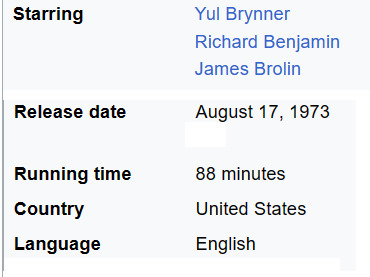
The film was from an original screenplay by Crichton and was his first theatrical film as director, after one TV film. It was also the first feature film to use digital image processing to pixellate photography to simulate an android point of view.
Critical reception was largely positive by contemporary and retrospective critics and Westworld was nominated for Hugo, Nebula, and Saturn awards.
Westworld was followed by a sequel, Futureworld (1976), and a short-lived television series, Beyond Westworld (1980). A television series based on the film debuted in 2016 on HBO.
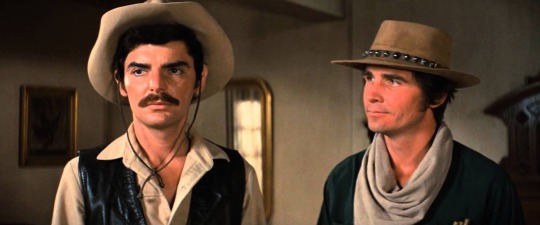
The film follows adult guests visiting an interactive amusement park containing lifelike androids that unexpectedly begin to malfunction. (Westworld (film) - Wikipedia)
IMdB RATING: 6'9 RUN TIME: 1'28'48
870-1 https://ok.ru/video/1809909222068
The sequel, FUTUREWORLD (1976), well, Is a "B movie" and I wouldn't take it any further than that, I though the argument needs a little more serious work, but an excellent idea.

Futureworld is a 1976 American science fiction thriller film directed by Richard T. Heffron and written by Mayo Simon and George Schenck.
It is a sequel to the 1973 Michael Crichton film Westworld, and is the second installment in the Westworld franchise. Westworld's writer-director, Michael Crichton, and the original studio Metro-Goldwyn-Mayer were not involved in this production.
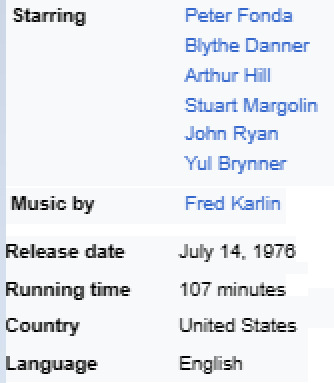
IMdB RATING: 5'7
The film attempted to take the plot in a different direction from Westworld, but it was not well received by U.S. critics but well received by French critic.
STORYLINE
Three years have past since the tragedy at West World, the adult entertainment resort run by Delos corp. Now, Ferrum the ashes, rises a supposed improved playland; Future World. After Rome a reporter that the new park had summer secrets of its own, he's killed, and the reporter along with her photographer decide to do an investigation.
870-2 https://ok.ru/video/2297265130011
0 notes
Text




W A T C H I N G
#FUTUREWORLD (1976)#Richard T. Heffron#Peter Fonda#Blythe Danner#Arthur Hill#Stuart Margolin#John Ryan#Yul Brynner#science fiction#thriller film#WATCHING#cyborgs#robots
111 notes
·
View notes
Text
On September 7, 1977, Futureworld debuted in Denmark.

#futureworld#dystopian science fiction#dystopian sci fi#science fiction#70s sci fi art#70s science fiction#movie art#art#drawing#movie history#pop art#modern art#pop surrealism#cult movies#portrait#cult film#richard t. heffron#peter fonda
1 note
·
View note
Photo

#futureworld#peter fonda#blythe danner#arthur hiller#stuart margolin#john ryan#yul brynner#richard t. heffron#1976
26 notes
·
View notes
Photo

Veriset hylsyt / Newman's Law (1974) Esselte Video / CIC Video https://www.videospace.fi/release/veriset_hylsyt_vhs_esselte_video_cic_video_finland
#Videospace#VHS#Veriset hylsyt#Newman's Law#Richard T. Heffron#George Peppard#Roger Robinson#Eugene Roche#VHS tapes#VHS art#VHS cover
1 note
·
View note
Photo

Futureworld [1976] by Richard T. Heffron
3 notes
·
View notes
Photo





New York City | I, The Jury (1982)
#i the jury#1982#richard t. heffron#mickey spillane#larry cohen#armand assante#barbara carrera#laurene landon#bill conti#andrew laszlo#garth craven#american cinema productions#thriller#mystery#film#neo noir
58 notes
·
View notes